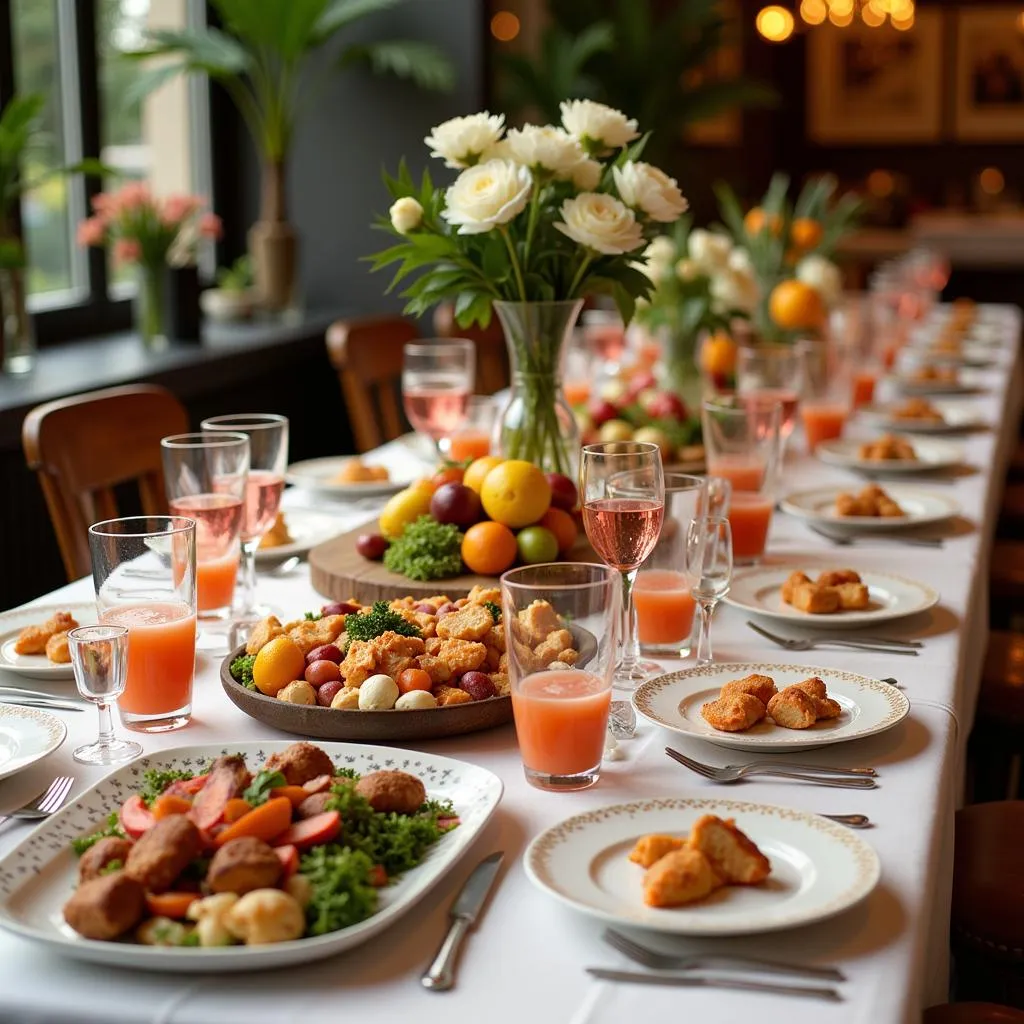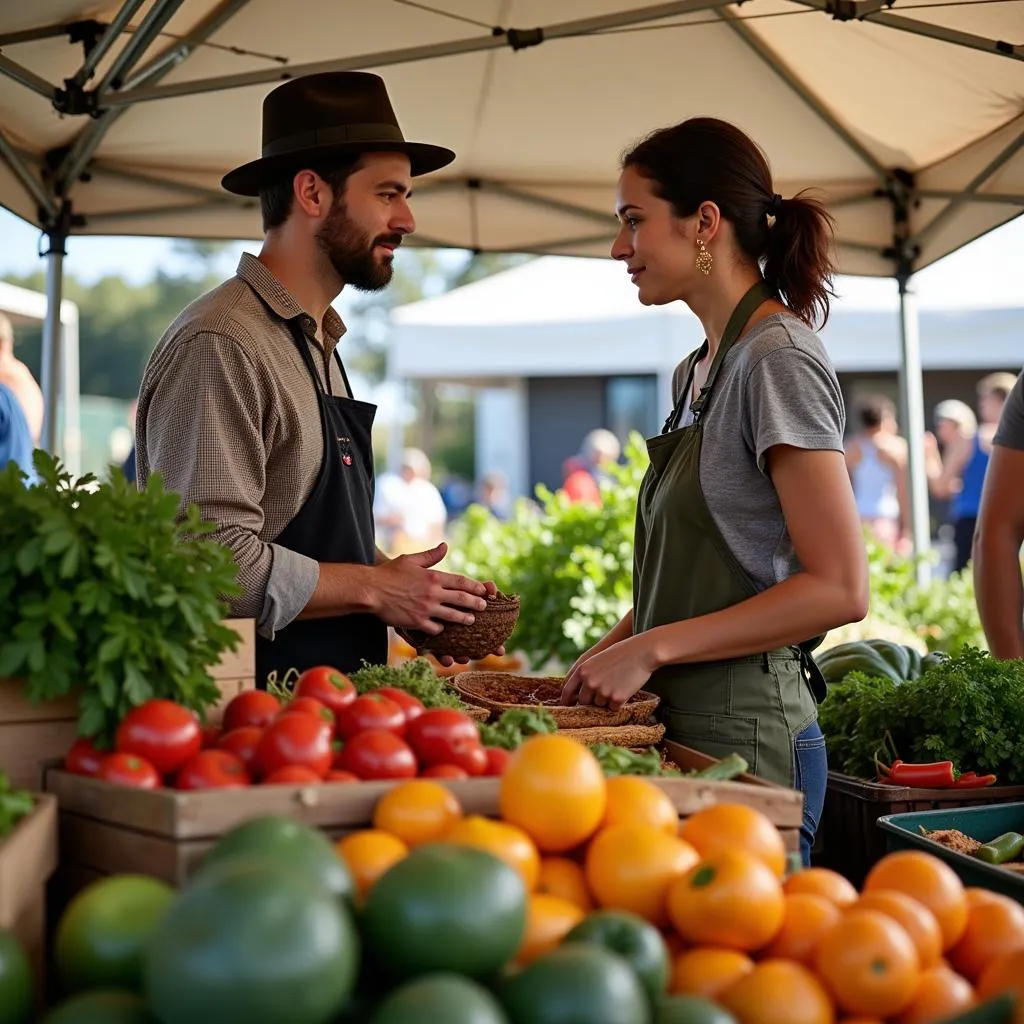Food Curation is more than just assembling a plate of aesthetically pleasing dishes; it’s about crafting a complete culinary experience. It’s the thoughtful selection, preparation, and presentation of food that tells a story, evokes emotions, and tantalizes the senses. From farm-to-table experiences to meticulously designed tasting menus, food curation is becoming increasingly popular among food enthusiasts and professionals alike.
 Food Curation for Events
Food Curation for Events
Understanding the Nuances of Food Curation
At its core, food curation involves a deep understanding of ingredients, flavors, and culinary techniques. It’s about creating a harmonious balance between taste, texture, and visual appeal. A skilled food curator possesses a keen eye for detail, a passion for culinary arts, and the ability to anticipate and cater to the preferences of their audience.
Whether it’s a casual gathering or a formal dinner party, the goal of food curation remains the same: to elevate the dining experience and leave a lasting impression on the palate. This can be achieved through a variety of approaches, from sourcing unique and high-quality ingredients to experimenting with innovative flavor combinations and presentation styles.
Key Elements of Successful Food Curation
1. Defining Your Culinary Identity
The first step in effective food curation is to define your culinary identity. What kind of experience do you want to create for your audience? Are you drawn to rustic, home-style cooking or sophisticated, modern cuisine? Do you prioritize local and seasonal ingredients or exotic flavors from around the world?
Once you have a clear understanding of your culinary vision, you can begin to curate menus and select ingredients that align with your overall theme. This clarity of purpose will shine through in every aspect of your food presentation, from the choice of serving ware to the arrangement of dishes.
2. Sourcing High-Quality Ingredients
The foundation of any great culinary creation lies in the quality of ingredients used. A skilled food curator understands the importance of sourcing fresh, seasonal, and ethically produced ingredients. They build relationships with local farmers, producers, and suppliers to ensure access to the finest ingredients available.
By prioritizing quality ingredients, you not only elevate the taste and nutritional value of your dishes but also support sustainable food practices and contribute to the local economy.
 Sustainable Food Sourcing for Food Curation
Sustainable Food Sourcing for Food Curation
3. Mastering the Art of Flavor Combinations
Creating harmonious and exciting flavor profiles is at the heart of successful food curation. A deep understanding of flavor profiles, complementary ingredients, and culinary techniques is essential for crafting dishes that are both delicious and memorable.
Experiment with different herbs, spices, and seasonings to add depth and complexity to your dishes. Don’t be afraid to think outside the box and explore unexpected flavor combinations that surprise and delight your palate.
4. Presentation: The Visual Feast
Visual appeal plays a crucial role in elevating the dining experience. Just as a beautifully plated dish can enhance the enjoyment of a meal, a well-curated food display can captivate the senses and create a sense of anticipation.
Consider the colors, textures, and heights of your dishes when arranging them on platters or serving trays. Use fresh herbs, edible flowers, or other garnishes to add visual interest and enhance the overall aesthetic appeal.
Food Curation: Beyond the Plate
While the focus of food curation often lies in creating memorable dining experiences, its principles can be applied to a wide range of culinary endeavors.
For food bloggers and influencers, food curation extends to creating engaging content that inspires and educates their audience. This can include sharing recipes, exploring culinary trends, highlighting local food businesses, and providing tips on how to curate their own culinary experiences.
Conclusion: Embracing the Art of Food Curation
Food curation is a celebration of culinary creativity and a testament to the power of food to bring people together. Whether you’re a seasoned chef or a passionate home cook, embracing the art of food curation can elevate your culinary creations and transform ordinary meals into extraordinary experiences. By focusing on quality ingredients, thoughtful flavor combinations, and visually appealing presentations, you can create dishes that tantalize the senses and leave a lasting impression on your guests.
FAQs about Food Curation
1. What is the difference between food styling and food curation?
While food styling focuses primarily on the visual presentation of food for photography and videography, food curation encompasses a broader range of elements, including ingredient selection, menu planning, and the overall dining experience.
2. Do I need to be a professional chef to curate food?
Absolutely not! Anyone with a passion for food and a desire to create memorable dining experiences can curate food. Start by experimenting in your own kitchen and gradually expand your culinary repertoire.
3. What are some tips for creating a visually appealing food display?
Use a variety of serving dishes, play with different heights and textures, incorporate fresh herbs and edible flowers, and pay attention to the color palette of your dishes.
4. Can you provide some examples of curated food experiences?
Sure! Think of a farm-to-table dinner featuring locally sourced ingredients, a themed tasting menu inspired by a specific cuisine or region, or a curated cheese and charcuterie board paired with complementary wines.
5. Where can I find inspiration for food curation?
Explore food blogs, cookbooks, culinary magazines, and social media platforms like Instagram and Pinterest. You can also draw inspiration from restaurants, farmers markets, and travel experiences.
Need help with your next culinary endeavor? Contact us at Phone Number: 02437655121, Email: [email protected] or visit us at 3PGH+8R9, ĐT70A, thôn Trung, Bắc Từ Liêm, Hà Nội, Việt Nam. Our dedicated customer service team is available 24/7 to assist you. For more helpful tips and information, browse through our website for related articles and resources.